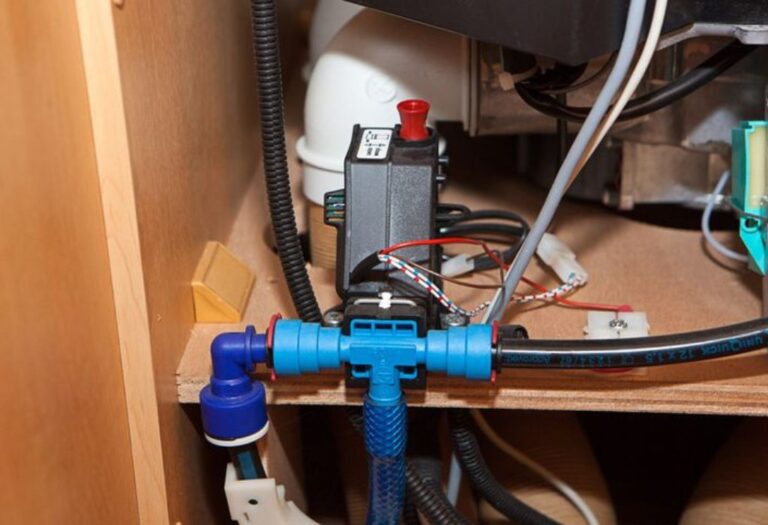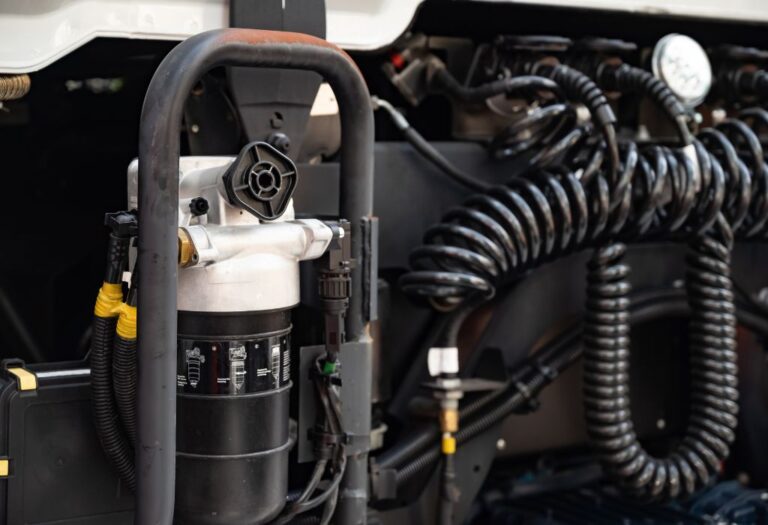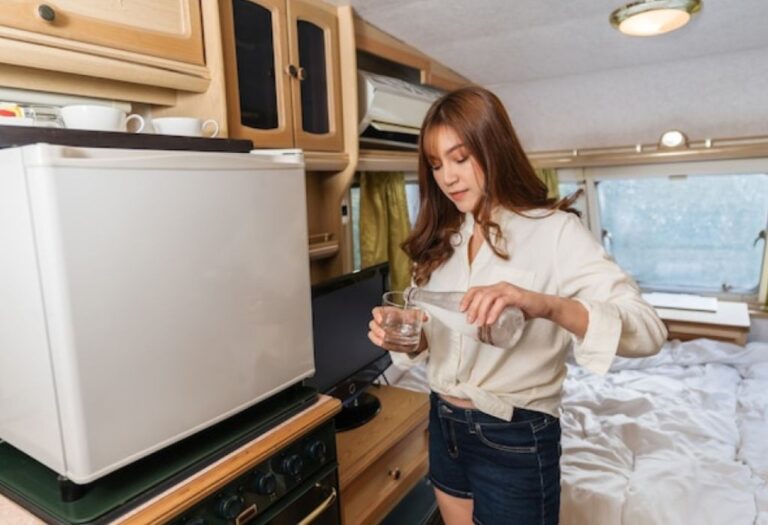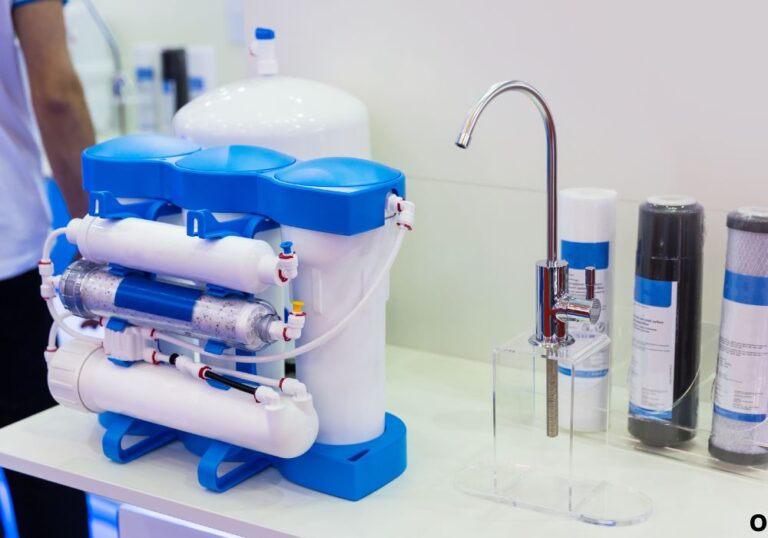How to Get Better Water Pressure in RV Shower
Low water pressure in an RV shower is a common frustration for travelers and full-time RVers.
Even when the tank is full, the water flow can feel weak, leaving showers unsatisfying and inefficient.
Understanding the causes of low pressure is the first step to fixing it.
Knowing how to adjust, maintain, or upgrade your system can make an RV shower feel as strong as a home bathroom.
Statistics suggest that nearly 40% of RV users report weak water flow from their onboard systems (source).
This often results from clogged pipes, worn pumps, or improperly set pressure regulators.
In this guide, we’ll explore how to get better water pressure in RV shower, including common causes, practical solutions, maintenance tips, and upgrades to ensure a strong, consistent flow no matter where you camp.
Understanding Water Pressure in RV Showers

Water pressure in RV showers is determined by pump capacity, plumbing layout, and pipe diameter.
Most RV water pumps operate between 30–50 PSI, which is lower than typical home showers.
On-demand pumps provide steady pressure when a faucet is open, while continuous pumps may experience dips during peak usage.
Pipe diameter and length also influence flow — narrower or longer lines create more resistance.
What is a typical RV water pressure range?
30–50 PSI is standard for most RV water systems.
How does pump type affect pressure?
On-demand pumps maintain consistent pressure; continuous pumps may drop during heavy use.
Do pipe diameters matter?
Yes — narrow pipes restrict flow, reducing shower pressure.
Does tank water vs city hookup change pressure?
City water usually provides steadier pressure if a regulator is properly set.
Can elevation affect water pressure?
Slightly — higher altitude can reduce gravitational flow from tanks.
Common Causes of Low Water Pressure
Several factors contribute to weak water flow in RV showers.
Worn water pumps, clogged filters, kinked hoses, or faulty regulators are common culprits.
Mineral buildup from hard water, airlocks, or old plumbing lines can further restrict flow.
Even the showerhead itself may limit pressure if it is clogged or designed for low flow.
How do clogged filters affect pressure?
They restrict water flow, lowering shower performance.
Can mineral buildup inside pipes lower pressure?
Yes — hard water deposits reduce water flow significantly.
Do RV showerheads restrict pressure?
Low-flow or aged showerheads can noticeably reduce water force.
Can pump failure cause low pressure?
Yes — worn diaphragms or motor issues lower PSI output.
Do inline pressure regulators affect flow?
Yes — faulty or low-setting regulators can limit maximum pressure.
Solutions to Improve RV Shower Water Pressure
Improving pressure may involve simple adjustments or upgrades.
Replacing showerheads, cleaning lines, or upgrading pumps can enhance flow.
Adjusting or bypassing regulators, removing kinks in hoses, and clearing filters also help.
Booster pumps or accumulator tanks can provide steadier and stronger pressure.
Can I upgrade my RV water pump?
Yes — higher PSI pumps deliver stronger, more consistent flow.
Will replacing the showerhead help?
Yes — modern high-pressure or low-flow optimized heads improve perceived water pressure.
Should I check and clean filters regularly?
Absolutely — clean filters maintain maximum flow.
Can I install a booster pump or accumulator?
Yes — these stabilize and increase pressure during peak usage.
Does water tank level affect pressure?
Low tank levels can reduce pump efficiency and overall flow.
Maintenance Tips for Consistent Pressure
Routine maintenance ensures strong and consistent water pressure.
Inspect hoses, pump components, and fittings for leaks or wear.
Flush mineral deposits and clean aerators or showerheads periodically.
Winterizing the system protects hoses and pumps, maintaining long-term performance.
How often should I check hoses for kinks or leaks?
Monthly or before long trips.
Should pumps be serviced?
Yes — diaphragms and pressure switches require periodic inspection.
Do mineral deposits require chemical treatment?
Sometimes — vinegar or descaling solutions help remove buildup.
Can a leak anywhere in the system affect shower pressure?
Yes — even small leaks reduce overall PSI.
Is winterizing the system important?
Yes — it protects hoses and pumps, maintaining long-term reliability.
Upgrading and Future Considerations

Consider long-term upgrades to maximize water pressure.
Larger diameter pipes, adjustable pressure regulators, and higher-capacity pumps provide sustained flow.
Smart water systems with sensors can optimize pressure automatically.
Inline booster pumps can increase PSI without extensive plumbing modifications.
Will a larger diameter pipe improve flow?
Yes — it reduces friction and increases shower pressure.
Are adjustable regulators worth installing?
Yes — they allow fine-tuning without overworking pumps.
Can smart RV water systems help?
Yes — they maintain consistent flow and prevent over-pressurization.
Do inline booster pumps provide measurable improvement?
Yes — they increase PSI effectively.
Should I consider professional plumbing upgrades?
For frequent RV travelers or large rigs, professional upgrades ensure reliable pressure.
Frequently Asked Questions
Why is my RV shower pressure lower than my home shower?
RV pumps are lower PSI and pipe diameters are smaller.
Can city water hookups increase pressure?
Yes — if a pressure regulator is correctly set.
How do I remove airlocks?
Run faucets and pump to purge trapped air.
Do low-flow showerheads reduce perceived pressure?
Yes — replacing them with high-pressure models improves flow.
How do I maintain consistent pressure on long trips?
Inspect and clean lines, filters, and check pump operation regularly.
Conclusion
Low RV shower pressure usually results from worn pumps, clogged plumbing, or restrictive showerheads.
Cleaning, maintaining, and upgrading system components can significantly improve flow.
Check filters, hoses, and regulators regularly to maintain consistent PSI.
Implementing these solutions allows for stronger, more reliable showers, making every RV trip more comfortable.
I’m David R. Coleman, the founder, lead writer, and lifelong tool enthusiast behind GarageToolPro.com. With years of experience in automotive repair, woodworking, and home DIY projects, I created this platform to share practical tips, detailed tool reviews, and step-by-step guides that help mechanics, hobbyists, and homeowners get the job done right the first time.






